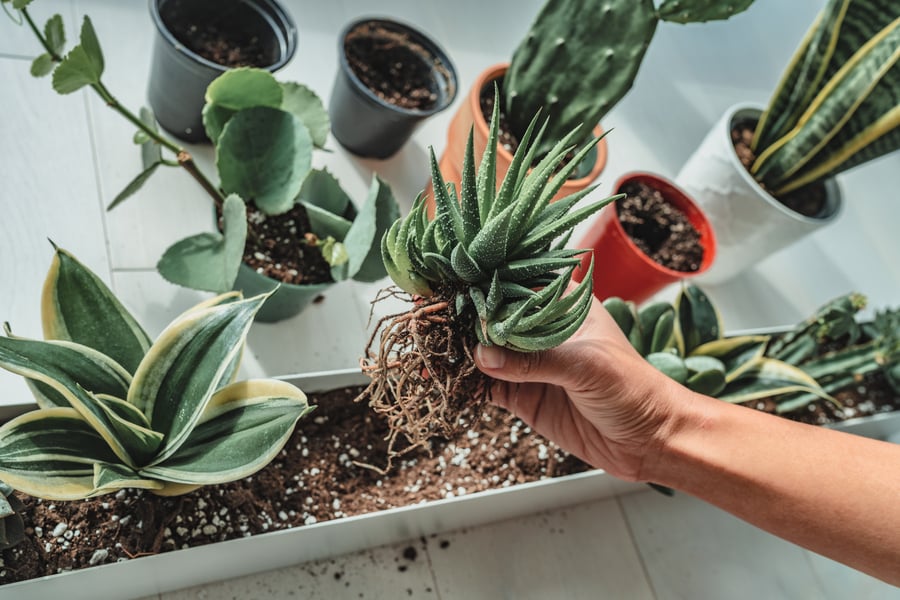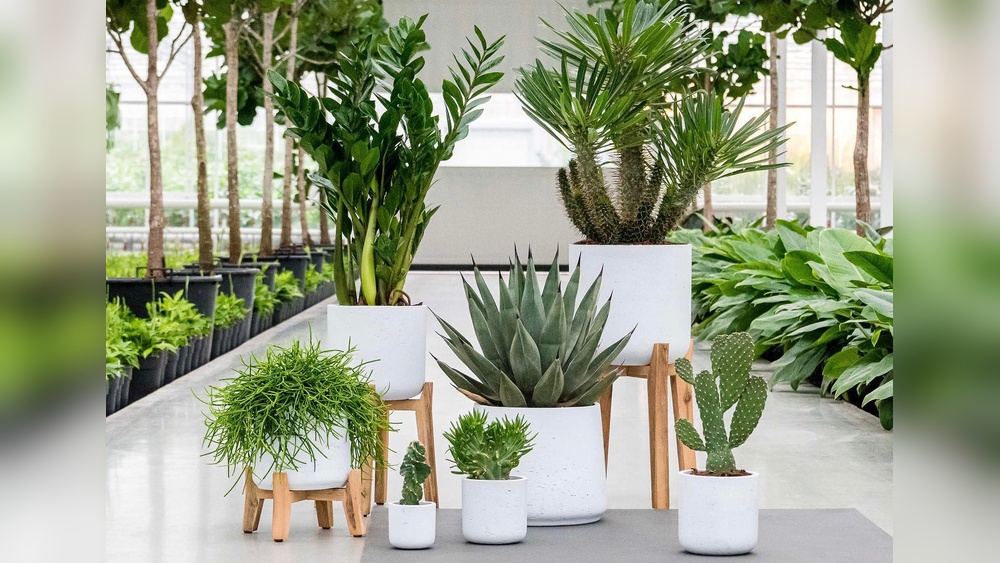As an Amazon Associate, I earn from qualifying purchases.
Are you eager to bring life and greenery into your home but worried about messy drainage and overwatering? You’re not alone.
Many plant lovers want beautiful indoor plants but struggle with pots that don’t have drainage holes. The good news? There are plenty of stunning, easy-care plants that thrive without drainage. Imagine having lush greenery that fits perfectly on your desk, shelf, or windowsill—no spills, no fuss.
You’ll discover 15 fantastic indoor plants that don’t need drainage holes, plus simple watering tips to keep them healthy and happy. Ready to transform your space with worry-free greenery? Let’s dive in!
Plants That Thrive Without Drainage
Some indoor plants grow well without drainage holes in their pots. These plants tolerate moist soil but do not need water to flow out. They are perfect for decorative pots or containers without drainage. Choosing the right plants helps prevent root rot and keeps your greenery healthy.
Here are four popular plants that thrive without drainage and require minimal care.
Snake Plant
Snake plants survive in low light and dry conditions. They store water in their leaves, so they need less watering. Overwatering can harm them, so let the soil dry between watering. Their tough nature makes them perfect for pots without drainage holes.
Zz Plant
ZZ plants tolerate low light and infrequent watering. Their thick stems hold water for long periods. They grow slowly, so they do not demand frequent soil moisture. ZZ plants adapt well to pots without drainage and still stay healthy.
Pothos
Pothos are very adaptable and can grow in water or soil. They survive in low light and need little water. They do well in closed pots without drainage if you water carefully. Pothos vines add green charm and clean indoor air.
Spider Plant
Spider plants grow well in various conditions and can tolerate wet soil briefly. They can even grow in water alone. These plants need occasional watering and bright, indirect light. Spider plants thrive in pots without drainage with proper watering habits.
:max_bytes(150000):strip_icc()/GettyImages-1175713995-b6e1ae72dcc3497caea09dfdfbf74b7b.jpg)
Other Suitable Indoor Plants
Some indoor plants adapt well to pots without drainage holes. These plants tolerate moist soil but do not need excess water. Choosing the right plants helps prevent root rot and keeps your home green. Below are some great options that thrive without drainage.
Chinese Evergreen
The Chinese Evergreen is a tough plant with attractive leaves. It prefers moist soil but can handle slight dryness. This plant grows well in low light and requires minimal care. It is perfect for indoor spaces without drainage.
Peace Lily
Peace Lilies enjoy moist soil and can survive in shade. They produce beautiful white flowers that brighten rooms. Water them carefully to avoid soggy soil. They work well in pots without drainage if monitored closely.
Jade Plant
The Jade Plant is a succulent that stores water in its leaves. It needs very little water and thrives in bright light. This plant is a good choice for pots without drainage holes. Water sparingly to keep it healthy.
Cast Iron Plant
True to its name, the Cast Iron Plant is very hardy. It tolerates low light and irregular watering. This plant can survive neglect and still look good. It grows well in pots without drainage and needs little fuss.
Anthurium
Anthuriums are tropical plants with shiny leaves and bright flowers. They like moist soil but dislike standing water. These plants thrive in pots without drainage when watered properly. They add color and style to any room.
Watering Techniques For No-drainage Pots
Watering plants in pots without drainage holes requires special care. Overwatering can cause root rot and kill your plant. Proper watering techniques keep the roots moist but avoid excess water buildup. Understanding how to water these pots helps your indoor plants thrive.
Moistening Roots Without Overwatering
Use a small amount of water each time you water. Pour slowly to let water soak into the soil. Stop once the top inch feels damp. Avoid drenching the soil or letting water pool at the bottom. This method keeps roots moist and healthy.
Preventing Waterlogged Soil
Water only when the soil feels dry to the touch. Do not pour more water until the soil absorbs the first amount. Avoid letting water sit in the pot base. Elevate the pot or place a tray underneath to catch extra water. Empty the tray after watering to prevent soggy soil.
Monitoring Soil Moisture Levels
Check soil moisture regularly with your finger or a moisture meter. Insert your finger about one inch into the soil. If it feels dry, it is time to water. If the soil feels damp, wait a few days before watering again. This simple check helps avoid overwatering and keeps plants healthy.
Benefits Of No-drainage Indoor Plants
No-drainage indoor plants offer unique benefits for plant lovers and busy households. They simplify plant care and fit perfectly in modern homes. These plants reduce mess and risk of water damage while still brightening indoor spaces. Their special traits make them excellent choices for apartments and offices. Understanding their benefits helps in choosing the right plants for your space.
Low Maintenance
No-drainage plants need less frequent watering than others. Their soil retains moisture without becoming soggy. This lowers the chance of root rot and overwatering. Many of these plants survive with minimal care. Ideal for beginners or those with busy schedules. They thrive without constant attention or special tools.
Air Purifying Qualities
Many no-drainage plants clean indoor air naturally. They absorb harmful toxins and release fresh oxygen. This improves air quality and creates a healthier home. Common examples include snake plants and pothos. These plants reduce dust and improve overall well-being. Air purification adds a natural touch to indoor living.
Adaptability To Indoor Environments
These plants adjust well to various indoor conditions. They tolerate low light and temperature changes easily. Many can grow in small spaces or containers without drainage holes. This flexibility allows placement almost anywhere in the home. No-drainage plants are perfect for rooms with limited sunlight. Their tough nature supports indoor lifestyles well.
Choosing The Right Soil And Pot
Choosing the right soil and pot is vital for indoor plants without drainage holes. Proper soil and pot selection helps prevent waterlogging and root rot. It supports healthy plant growth by managing moisture carefully. Understanding soil types, pot materials, and layering can improve water control. This knowledge ensures plants thrive even without drainage.
Soil Types For Moisture Control
Use soil that drains well but holds some moisture. A mix of peat, perlite, and sand works great. Peat retains water, while perlite improves aeration and drainage. Avoid heavy soils that stay wet too long. Moisture control soil helps roots get oxygen and prevents rot.
Pot Materials And Their Impact
Pot materials affect how soil dries and stays moist. Terracotta pots absorb water, helping soil dry faster. Plastic pots hold moisture longer, which needs careful watering. Ceramic pots with glaze behave like plastic, retaining moisture. Choose pot material based on your plant’s water needs and your watering habits.
Using Layering Techniques To Manage Water
Layering helps control excess water in pots without drainage. Start with a layer of small stones or gravel at the bottom. This layer traps extra water away from roots. Next, add a barrier like a mesh or coffee filter to keep soil from mixing with stones. Finally, add your soil mix on top. Layering reduces water buildup and protects roots.
:strip_icc()/17-drought-tolerant-houseplants-you-cant-kill-edit-09e606d9797140a982de29576b9a9268.jpg)
Common Mistakes To Avoid
Growing indoor plants without drainage holes can be tricky. Many beginners make mistakes that harm their plants. Understanding common errors helps keep plants healthy and thriving. Avoid these pitfalls to enjoy your green space.
Overwatering Risks
Overwatering is the top mistake with no-drainage pots. Water builds up and drowns roots. This leads to root rot, a deadly disease for plants. Always add small amounts of water. Let the soil dry slightly before watering again. Remember, less is more for these plants.
Ignoring Plant Signals
Plants show clear signs when stressed. Yellow leaves or soft stems mean too much water. Brown tips can signal dryness or overwatering. Pay attention to your plant’s leaves and stems. Adjust watering based on these signals. Ignoring signs leads to poor growth and death.
Using Unsuitable Containers
Not all pots work without drainage. Choose containers that allow some air to reach roots. Avoid fully sealed pots that trap water inside. Consider pots made of breathable materials like terracotta. Using the wrong container causes water to pool and damage roots.

Frequently Asked Questions
What Houseplant Doesn’t Need Drainage?
Snake plants, ZZ plants, pothos, spider plants, and Chinese evergreens can thrive without drainage holes. Water carefully to prevent root rot.
What Plant Removes 78% Of Airborne Mold?
The Boston fern removes up to 78% of airborne mold spores, improving indoor air quality effectively.
What Indoor Plant Doesn T Require A Lot Of Water?
Snake plants, ZZ plants, and pothos require minimal water and tolerate low light, making them ideal low-maintenance indoor plants.
What Indoor Plants Can Live In Water Only?
Pothos, lucky bamboo, philodendron, and spider plant can live in water only. Change water weekly to prevent rot.
What Indoor Plants Grow Well Without Drainage Holes?
Snake plants, ZZ plants, pothos, spider plants, and Chinese evergreens grow well without drainage.
Conclusion
Choosing indoor plants that don’t need drainage makes plant care simpler. These plants thrive with less worry about overwatering. Just water them carefully and check the soil moisture often. They add green beauty to any space, even without drainage holes.
Try these easy-care plants to brighten your home effortlessly. Enjoy the benefits of indoor gardening with less fuss and more joy.

